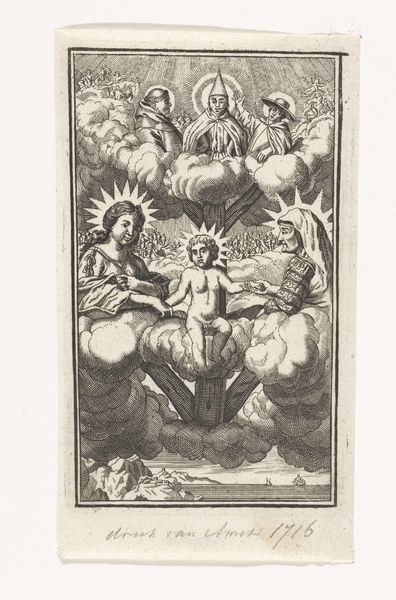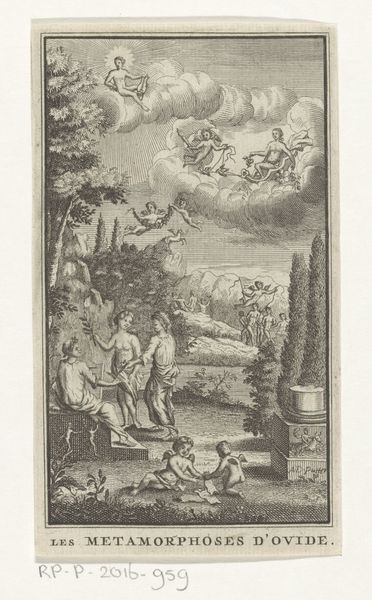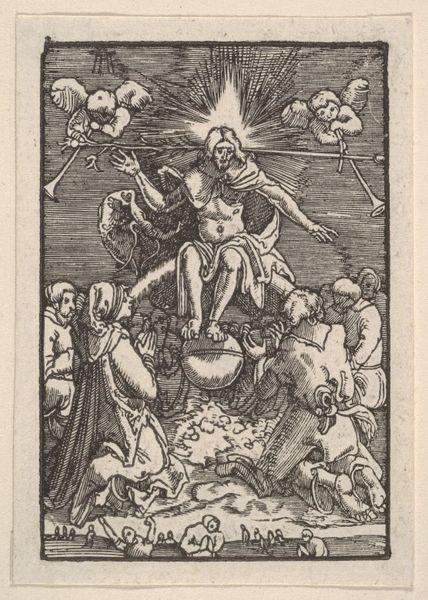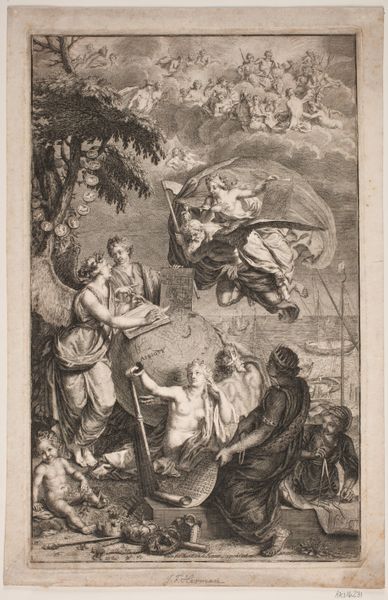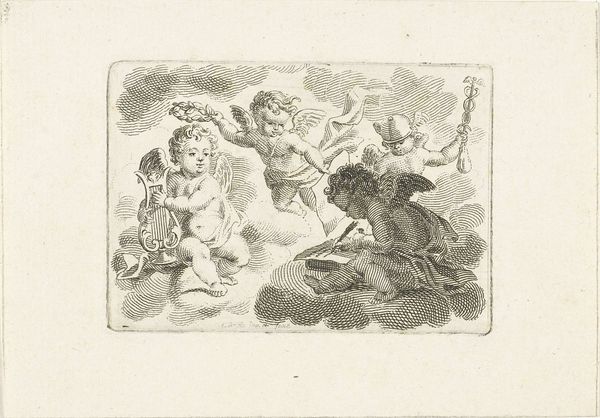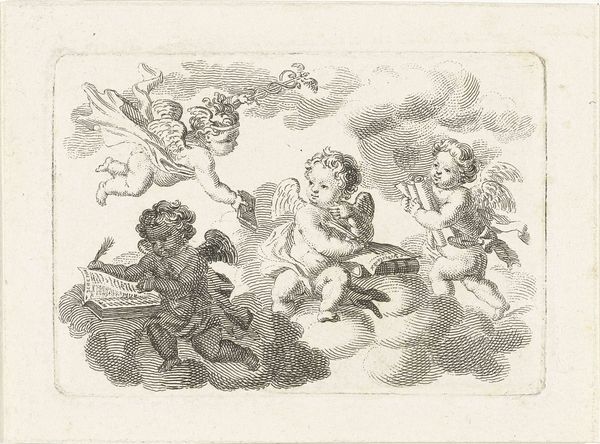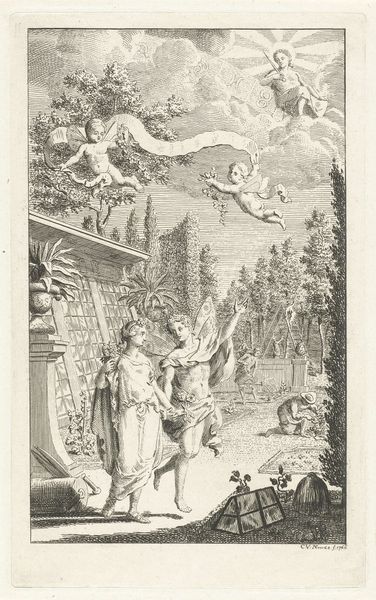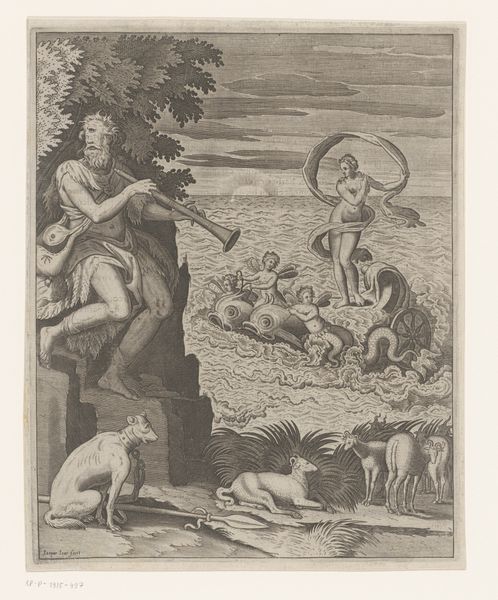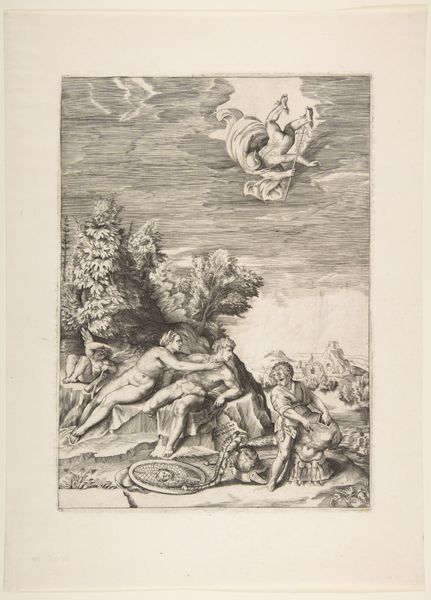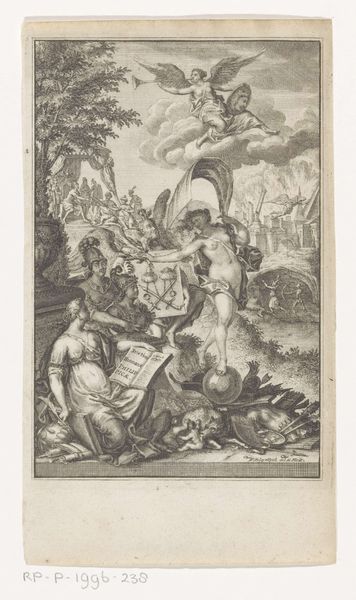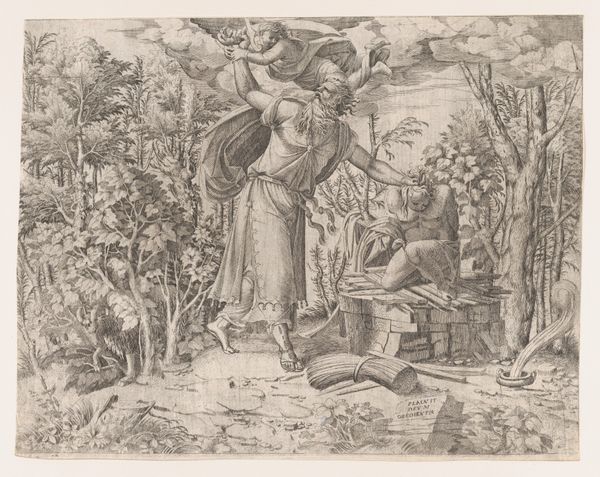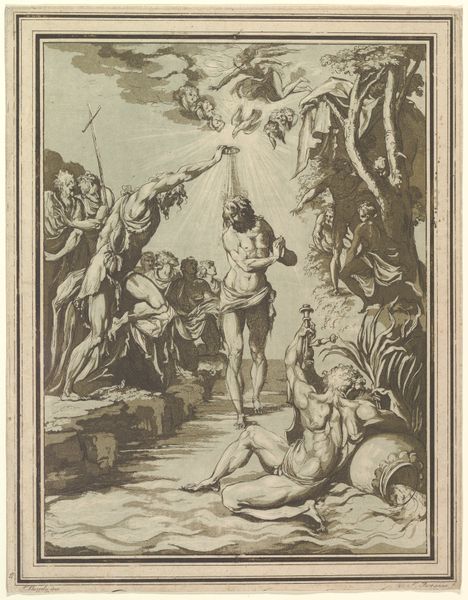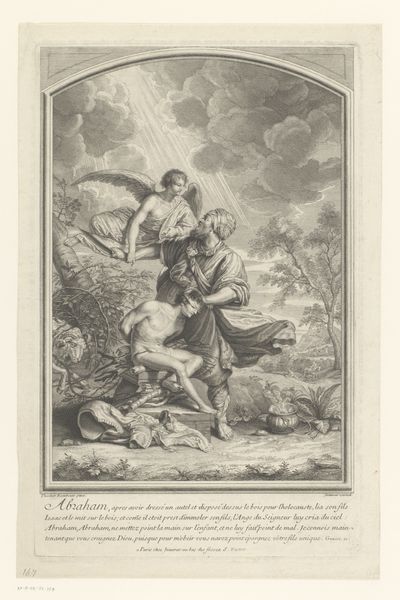
print, ink, engraving
#
allegory
#
baroque
# print
#
figuration
#
ink
#
line
#
history-painting
#
engraving
Dimensions: height 295 mm, width 205 mm
Copyright: Rijks Museum: Open Domain
Curator: This print, created in 1697, is an allegorical emblem related to the Peace of Rijswijk. Its artist is currently listed as anonymous, and it's held here at the Rijksmuseum. Immediately, it feels very much of its time, invoking notions of power and justice. Editor: It’s certainly... striking. All those griffins, the unicorn... and is that an all-seeing eye emanating rays? There's an almost overwhelming amount of visual symbolism going on here. And everything is in the print making medium. You really get the details in this. Curator: Indeed. The primary material is likely ink, used in an engraving process, hence the fine lines. Consider the labor involved in crafting these meticulous details, the skilled artisan carefully etching the plate, producing what was effectively political propaganda meant for distribution and consumption by a literate public. Editor: Propaganda perhaps commissioned to shore up support for William after years of conflict. This was intended for broad consumption, but only by the elites, due to literacy levels. Let’s analyze further... the imagery speaks volumes about the societal and institutional role art played. It's meant to be distributed throughout the relevant population of The Dutch Republic, influencing opinion and solidifying political narratives in homes, coffeeshops and taverns alike. Curator: The allegorical figures – Patience, Prudence, Fortitude above – embody the virtues associated with the peace process, implying these qualities led to William's success in ending conflict. We need to recall that printmaking in the late 17th century was about reproducibility, dissemination of political ideology. What were the specific print houses, or individual laborers were contracted to reproduce copies like these. Where they unionized. This would speak directly to a new social reading of Dutch art in the age of mass printing and consumption. Editor: Absolutely, and the location of origin, the place in which it was printed and dispersed would reveal information on not only its impact and sphere of cultural infuence, but on that location's values too. You are not incorrect, it is all worth study. I keep fixating on William himself seated upon the chariot though. Even today, viewing this after centuries, this image must have reinforced notions of legitimate leadership. The visual weight of these details! Curator: Yes, and thinking of its materiality again, each impression produced represents labor, trade, consumption... an interconnected network. This print transcends being just an image, It embodies material relations and exchanges within Dutch society in a global trade network. Editor: It speaks volumes not only about art, but power and cultural memory as well. This Peace of Rijswijk helped shaped the world stage in 1697, and its echo lives here through material and symbol. Curator: Precisely. Examining such prints can certainly alter our understanding about both art and society within specific historical moments.
Comments
No comments
Be the first to comment and join the conversation on the ultimate creative platform.
